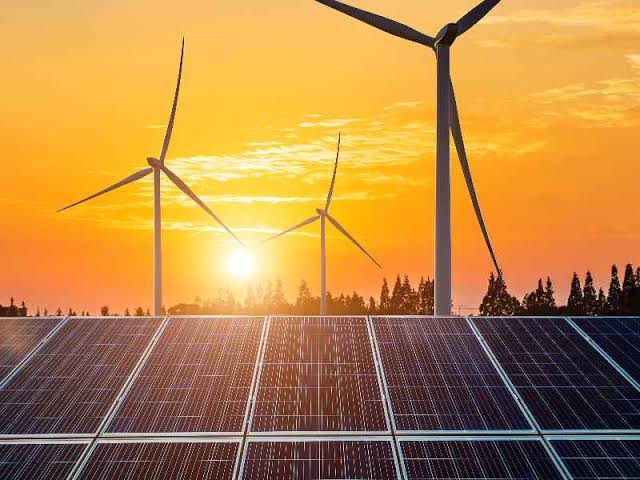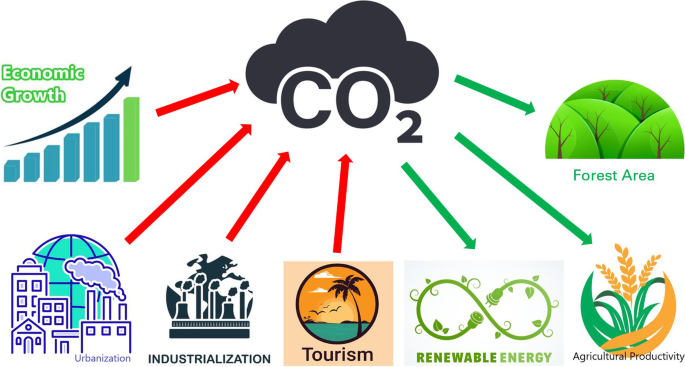
Renewable energy sources are natural resources that can be replenished over time and are a sustainable way to generate energy. They are an alternative to fossil fuels and help reduce greenhouse gas emissions, mitigating climate change. The main types of renewable energy sources are:
1. Solar Energy:
Energy generated from the sun’s rays, either through photovoltaic panels or solar thermal systems.
2. Wind Energy:
Energy generated from the wind, using wind turbines to convert kinetic energy into electricity.
3. Hydro Energy:
Energy generated from the movement of water, such as from rivers, oceans, or tidal currents, using hydroelectric power plants or tidal power turbines.
4. Geothermal Energy:
Energy generated from the heat of the Earth’s core, used for heating, cooling, or generating electricity.
5. Biomass Energy:
Energy generated from organic matter, such as wood, crops, or waste, through combustion, anaerobic digestion, or gasification.
6. Hydrogen Energy:
Energy generated from the reaction of hydrogen with oxygen, typically produced from renewable sources like solar or wind power.
Renewable energy sources offer several benefits, including:
- Sustainability
- Low operating costs
- Reduced greenhouse gas emissions
- Energy independence
- Job creation and economic benefits
As technology continues to evolve, renewable energy sources are becoming increasingly cost-competitive with fossil fuels, driving growth and adoption worldwide.
Emerging Trends and Innovations:
1. Floating Offshore Wind (FOW):
Wind turbines installed on floating structures in the ocean.
2. Bifacial Solar Panels:
Solar panels that generate electricity from both sides.
3. Perovskite Solar Cells:
New solar cell material with higher efficiency rates.
4. Artificial Photosynthesis:
Mimicking photosynthesis to produce fuels from sunlight.
5. Space-Based Solar Power:
Collecting solar energy in orbit and beaming it back to Earth.
Decarbonization and Electrification:
1. Electrification of Transportation:
Switching to electric vehicles.
2. Electrification of Industry:
Using electricity instead of fossil fuels for industrial processes.
3. _Carbon Capture, Utilization and Storage (CCUS):
Capturing CO2 emissions and utilizing or storing them.
4. Smart Grids and Energy Storage: Managing energy distribution and storage for a low-carbon grid.
Renewable Energy and Sustainability:
1. Sustainable Land Use:
Ensuring renewable energy development doesn’t harm ecosystems.
2. Water Conservation:
Minimizing water usage in renewable energy production.
3. Recycling and Waste Reduction:
Reducing waste and recycling materials in renewable energy technologies.
4. Community Engagement and Benefits:
Ensuring local communities benefit from renewable energy projects.
Global Renewable Energy Scenarios:
1. IEA’s Net-Zero Emissions Scenario:_
A scenario where global emissions reach net-zero by 2050.
2. IRENA’s Global Renewables Outlook:
A scenario where 80% of global energy comes from renewables by 2050.
3. National Renewable Energy Action Plans (NREAPs):
Countries’ plans to increase renewable energy deployment.
The best renewable energy source depends on various factors, including:
1. Location:
Different regions have varying resources (e.g., sunlight, wind, water) and suitability for specific technologies.
2. Cost:
The cost of installation, maintenance, and operation varies among technologies.
3. Energy demand:
The amount of energy required influences the choice of technology.
4. Environmental impact:
Considerations like land use, habitat disruption, and water usage affect the decision.
5. Technology advancements:
Innovations and improvements in efficiency, storage, and grid integration impact the suitability of each source.
Here’s a brief comparison of popular renewable energy sources:
1. Solar Energy:
Suitable for regions with high sunlight exposure, solar energy is ideal for residential and commercial use.
2. Wind Energy:
Effective in areas with strong wind patterns, wind energy is often used for large-scale power generation.
3. Hydro Energy:
Dependent on water resources, hydro energy is suitable for regions with significant water flow.
4. Geothermal Energy:
Ideal for areas with substantial geothermal activity, this source provides consistent power.
5. Biomass Energy:
Suitable for regions with abundant organic matter, biomass energy offers a reliable source.
Based on global suitability, cost-effectiveness, and scalability, _solar energy_ is often considered the best renewable energy source. However, the optimal choice ultimately depends on local conditions and specific requirements.
Consider consulting with a renewable energy expert to determine the most suitable option for your specific situation.








